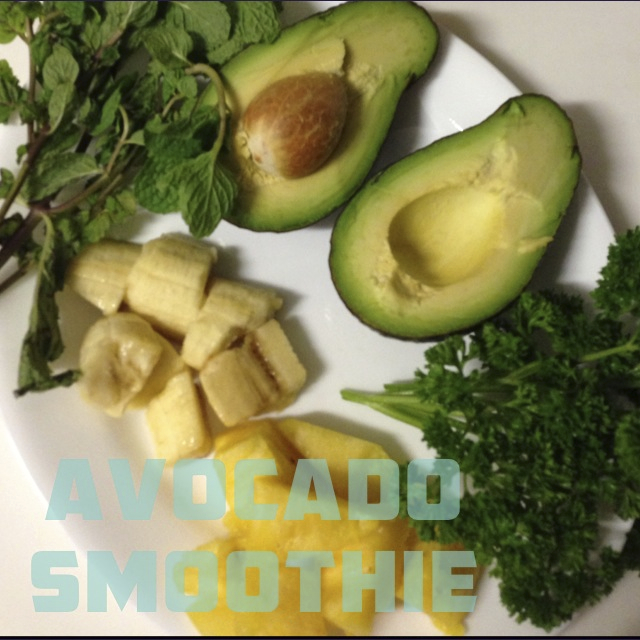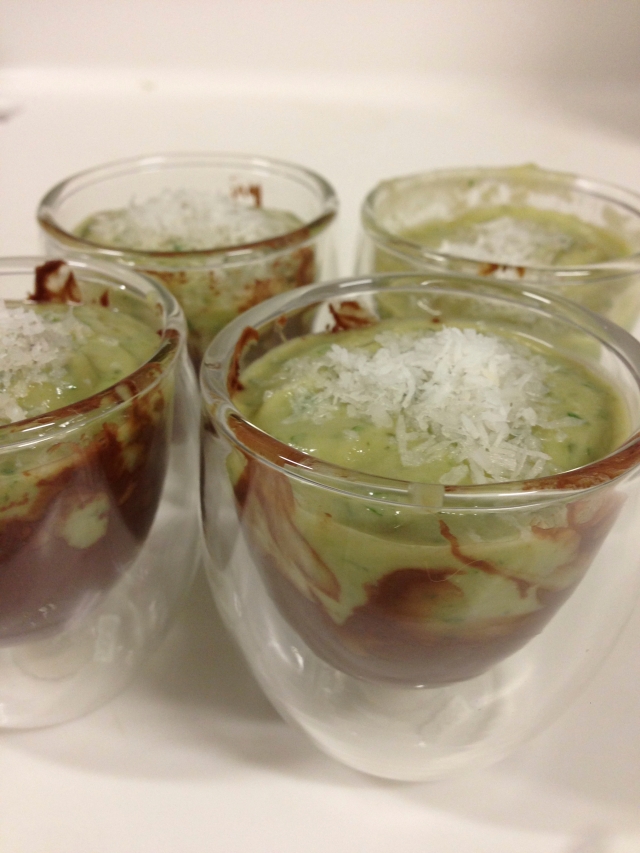I got invited to attend UBS Eco Fair on 14 June 2013. Sweng and I set up BGO Ecoshop booth there to introduce some Superfoods we were selling on our online store www.BGOecoshop.com. I also gave a demo on how to make heathy smoothie and I chose the two fruits that I often use – avocado and banana.
The following are the ingredients that I used for the smoothie workshop. Note that you can just use avocado and banana together with any liquid (any milk, water etc) that you prefer. The addition of herbs, nut butter and yoghurt are optional.
Avocado (how to pick and buy avocados)
Avocado is a great fruit and it is a pity that some people avoid it because of its high fat content. But the truth is that we need fats as a source of energy and support the function of our nerves and brain. The key is to substitute saturated fats and trans fats with nutrient dense fruits like avocado which offers mono and polyunsaturated fat content.
Besides beneficial fats, avocado also gives us good amount of carotenoids, proteins and it is anti-inflammatory. This means avocadoes can help prevent or mitigate against both osteo- and rheumatoid arthritis.
One cup of pureed avocado has…
- 368 Calories
- 4.6 g of Protein
- 19.62 g of Carbohydrate
- 1166 mg of Potassium
- 23.0 mg of Vitamin C
- 175 mg Beta-sitosterol
- 0 mg Cholesterol
The information above is based on the USDA National Nutrient Database for Standard Reference. Search the database for “avocado”.
Bananas
I can’t tell you a fruit that is more commonly used in smoothies than bananas. It is such a versatile nutrient-packed fruit and is often used as baby’s first weaning food. Naturally fat- cholesterol- and sodium-free, bananas are also a good source of potassium (helps our heart beat, reduce heart disease), dietary fibre, magnesium (transmission of nerve impulse, aids absorption of calcium) and vitamins B6 (aids healthy nerve and brain functions) and C.
Pineapple (optional)
Normally, I would limit my smoothie to just two fruits. But I saw some pineapples idling in my fridge on the day I made the smoothie, so I added them as well, as they add a sweet tropical taste to my smoothie. Pineapples are loaded with vitamins and minerals including vitamin A, vitamin C, calcium, phosphorus, and potassium. It is also rich in fiber and calories. On top of it all, this fruit is low in fat and cholesterol. All the nutrients it contains promote good health.
Coconut water (replaceable with milk or water)
I opted for fresh coconut water (the clear type, not to be confused with coconut milk, which also has its health benefits, but that’s another future post.) Coconut water contains easily digested carbohydrate in the form of sugar and electrolytes. It has fewer calories, less sodium, and more potassium than a sports drink.
If you are using milk instead of coconut water, I suggest using lactose-free milk such as oat milk (high protein and fibre content), quinoa milk (good amount of amino acids) and soy milk (high in essential fatty acids). These are more easily digestible than dairy milk and contain more health benefits.
Parsley (optional)
I included herbs like parsley because I wanted to zest up the smoothie which I knew would have a sweet taste.
Parsley is often used as garnish but it turns out to be quite a good addition to smoothie as well. It is rich in many vital vitamins (Vitamin C, B 12, K and A) and keeps our immune system strong, tones our bones and heals the nervous system too.
Regular use of parsley can help control your blood pressure. Pregnant mums will welcome the folic acid in this herb.
Mint (optional)
I blended a small amount of mint leaves to give the smoothie a fresh minty aroma.
Mint is a great appetizer, and it promotes digestion. It also soothes stomachs in cases of indigestion or inflammation.
Yoghurt (optional)
I added some yoghurt for added creaminess in the smoothie and also to introduce some healthy live cultures (probiotics) to our intestines. These aid in digestion as well as giving us calcium, vitamin B-2, B-12, potassium and magnesium.
Almond nut butter (optional)
I filled the bottom of the smoothie cup with 2 teaspoons of Rawmio raw & vegan Almond Crunch (almond nut butter with added raw cacao nibs, raw coconut, sweetened with coconut sugar, flavoured with vanilla beans and Himalayan salt). I also smeared half the sides of the smoothie cup with the back of the spoon such that the chocolate almond nut butter is visible on the outside of the glass (looks nice and tempting!).
I chose the crunch series of Rawmio’s nut butter, as it provides cacao nibs to munch on. Also the chocolatey taste goes well with avocado and banana. You can add nuts to your smoothie to have the crunch too.
Almonds are a good fiber source and also contain protein. Because of their high monounsaturated fat content, they are a healthy food choice. Almonds or almond butter provide us with vitamin E, potassium, magnesium, iron, calcium and phosphorus. You can opt for other nut butters, just make sure that they are processed in low heat and not added with unhealthy ingredients such as additives, excessive salt, sugar or saturated fats.
Unsweetened coconut flakes (optional)
Used as toppings on our smoothie. Coconut flakes give a distinct tropical flavour! You can swop for other toppings such as chocolate chips, cacao nibs or nuts.
Recipe (serves 2 full cups, or 5 small cups)
1. Cut one banana and one avocado into small pieces. (You can add more bananas or avocado or other fruits like pineapples according to your taste preference. More bananas or pineapples, more sweetness.)
2. Blend the fruits after adding some liquids (coconut water, milk or plain water). Add a little liquid (a few tablespoons) at a time. If the fruits seem to have a hard time churning, you need to add more liquid.
3. Tear the herbs into smaller bits and blend. Start with a tablespoonful of each and adjust amount according to your taste.
4. If you happen to add too much liquid and prefer your smoothie to be thicker and creamier, add a tablespoon of yoghurt.
5. Prepare your serving cups. Scoop 2 teaspoons of nut butter into each cup and smear half the cup with the back of the spoon.
6. Pour in smoothie.
7. Sprinkle the top of the smoothie with raw unsweetened coconut flakes for flavour.
Note:
If you intend to chill your smoothie before serving, then add the nut butter only before serving, on top of the smoothie. Otherwise, the nut butter will harden at the bottom of the smoothie upon chilling.
Tip:
You can make your smoothie beforehand and freeze them in ice cubes. When you need to have them, just blend them with some liquid.


